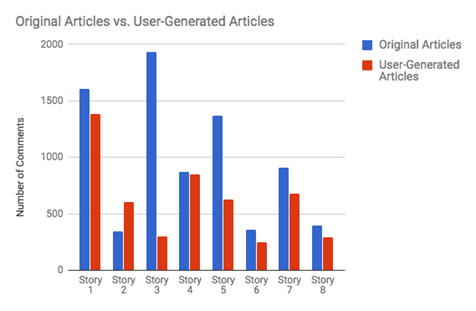This article was originally posted on INMA.
Not all internet users have good intentions. Through misinformation and harassment, there are countless trolls online that cause the quality of conversations and content to decay.
The destructive power of trolls has only been intensified by the ongoing pandemic.
“We are swimming in a cesspool of misinformation,” states Jevin west, a professor at the University of Washington’s Information School. “The pandemic likely makes it worse because increased levels of uncertainty creates the kinds of environments that trolls take advantage of.”
Even on your company’s digital properties, far away from social media, trolls are completely toxic to the environment.
But you shouldn’t have to choose between letting trolls run rampant on your company’s properties and getting rid of social tools altogether. After all, providing social experiences online for your audiences is essential to building a loyal community.
If you want to protect your company’s content and audience against trolls, moderation is your best line of defense. Simply ignoring trolls isn’t enough, and will run the following risks on your properties:
Harming Your Brand’s Reputation
Trying to position yourself as a trustworthy space for news or a prime destination for entertainment?
No matter how interesting and reliable your content is, trolls have the power to ruin the way consumers see your brand.
In fact, Pew Research Center reports that “one-in-ten (13%) say they have stopped using an online service after witnessing other users engage in harassing behaviors.”
This means that allowing trolls to exist on your digital properties causes consumers to perceive your content to be toxic and avoid your digital properties.
Moderation can give your company the power to align comments with your community guidelines, which will help solidify your company’s position as a brand worth engaging with and supporting.
Ruining On-Site Engagement Tools and Events
When left unchecked, trolls can effortlessly turn your engagement tools and digital events into dangerous territory for visitors.
According to Leigh Adams, product manager of moderation services at Viafoura, “trolls quickly become the vocal minority, and can quickly overtake and drown out more relevant conversation.”
And this comes with some detrimental consequences. More specifically, it can lower the effectiveness of any on-site audience engagement features your company has put in place. Irrelevant conversations block your engagement tools from their primary purpose: to build meaningful audience connections around content that matters.
While trolls manipulate and harass others for a multitude of reasons, they all have one thing in common: they demand attention. As a result, unless trolls are effectively dealt with, they can sabotage the overall consumer experience on your digital properties.
Setting a Bad Example for New Users
Allowing trolls to do whatever they want can attract a significant amount of hostile and offensive behavior from other users.
Failing to deal with toxic behavior shows users that they can be as aggressive and obnoxious as they want without facing any ramifications. So without putting a trustworthy moderation solution in place, you’re practically inviting community members and visitors to showcase their bad behavior.
“What may be grotesquely cathartic at the individual level simultaneously blooms into a toxic form of expression that ultimately erodes collective good will,” explains Kent Bausman, a Sociology professor at Maryville University.
In other words, consumers can’t be perfectly separated into trolls and good community members — it’s easy for anyone to become a troll when hidden behind a screen.
Bausman also suggests that trolling can often behave like a contagion, infecting other people if you don’t immediately isolate it.
Breaking Apart Your Existing Engaged Audience
Over one-quarter of Americans avoid contributing to conversations online after seeing toxicity in digital social spaces.
By letting even a single troll run wild, your active audience as well as new visitors will be discouraged from engaging with others around your content.
This poses a major problem, though. The less your audience engages on your properties, the less they’ll rely on your site or app for day-to-day interactions and human connection.
Keep your audience loyal, comfortable and profitable by ensuring trolls aren’t wreaking havoc on your community.
You don’t need to choose between interactive tools and a safe environment for your consumers — you simply need to hunt down trolls that threaten your social spaces. And it’s never too late to get started.



